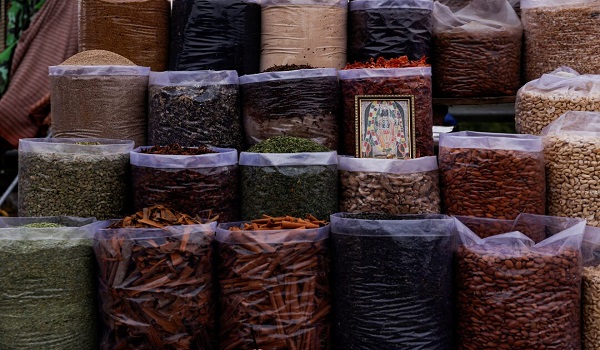From bustling street food stalls in Delhi to sleek gourmet kitchens in Bengaluru, the Indian palate is evolving—and at the centre of this culinary shift is a quiet but explosive category: seasonings. Once relegated to dusty masala dabbas, these spice blends and flavour enhancers are now key players in India’s food landscape, with a market that touched $2.82 billion in 2024 and is poised to hit $4.06 billion by 2030.
But behind the flavorful facade, the industry faces an urgent challenge: a tightening web of food safety regulations and increasing scrutiny on ingredients, labelling, and compliance.
The New Age of Seasoning
In Indian kitchens today, it’s not just about turmeric and red chilli powder anymore. Consumers are reaching for chipotle spice rubs, Mediterranean herb blends, peri-peri masalas, and artisanal seasonings that combine the comfort of Indian tradition with the thrill of global cuisine. Brands are innovating at a rapid clip, creating fusion flavours that cater to young, urban households craving convenience, without compromising on taste.
“People want to experiment but also want authenticity,” says a product development head at a leading spice company. “That’s why we’re seeing masalas that combine Kashmiri chillies with Italian basil or ghee-roasted cumin with Japanese togarashi.”
This globalization of the Indian spice rack is driven by rising urban incomes, more frequent international travel, global media exposure, and increased use of food delivery and ready-to-cook kits. The Household Consumption Expenditure Survey (Feb 2024) reported that average urban monthly spending rose to $77.95 per person, highlighting a growing preference for premium, convenient meal solutions.
Health is the New Flavour
At the heart of this flavour revolution lies another powerful trend: wellness. Consumers, particularly millennials and Gen Z, are seeking clean-label, organic, low-sodium, vegan, and additive-free seasonings that align with their health goals. Labels now boast “immunity-boosting,” “cold-pressed,” and “no preservatives” as essential selling points, not just marketing jargon.
This movement is not just a passing trend—it’s a market reset. According to industry analysts, the growing focus on food-as-medicine has permanently reshaped how consumers interact with seasonings. Today’s shopper is informed, ingredient-aware, and increasingly willing to pay more for perceived health benefits.
Regulatory Reality Check
While innovation is thriving, so too is regulatory oversight. The seasoning industry is grappling with a complex compliance matrix—from ingredient sourcing and labelling requirements to safety testing and standardization.
With hundreds of ingredient variations across thousands of brands, ensuring consistency and safety is no small task. The challenge intensifies when catering to global palates, where cross-border ingredient regulations differ significantly. Many small and medium-sized enterprises find these standards hard to meet, resulting in delays, reformulations, or failed product launches.
“The regulatory landscape hasn’t kept pace with the innovation happening on the ground,” notes a consultant working with FMCG brands. “We urgently need more clarity around permissible blends, clean-label definitions, and cross-border compliance.”
Digital Push and Packaging Boom
India’s seasoning boom isn’t confined to metros. Thanks to the rapid rise of e-commerce and quick commerce platforms, even tier-II and tier-III cities now have access to gourmet spice blends, organic masalas, and international seasoning kits at the tap of a button.
Supermarkets and hypermarkets have also expanded shelf space for premium seasonings, helping transition consumers away from unbranded or unpackaged spices. Currently, 56% of Indian consumers still buy loose spices, but that number is steadily declining. Younger consumers, especially those aged 26–32, are driving the shift toward branded, single-use sachets and transparent packaging—a key opportunity for established and emerging players alike.
Regional Stories, National Tastes
Despite the global influence, India’s regional spice legacy remains a powerful force. South India, for instance, is the fastest-growing seasoning segment, thanks to ingredients like curry leaves, tamarind, black pepper, and mustard seeds. Meanwhile, in Delhi-NCR and Chandigarh, gourmet masalas and ready-to-use seasoning mixes are winning over the convenience-focused consumer.
Brands are increasingly focusing on regionally rooted products with pan-India appeal, such as Awadhi Garam Masala or Kolhapuri Kanda Lasun Masala—spices that speak to both heritage and innovation.
The Road Ahead: Blending Tradition and Trust
India’s seasoning industry stands at a fascinating intersection of culinary innovation, consumer empowerment, and regulatory transformation. As tastes evolve and global influences deepen, manufacturers are being called upon to not just deliver great flavour, but also build trust through transparency, quality, and safety.
For brands that can blend tradition with traceability, taste with health, and authenticity with convenience, the future of India’s seasoning market is nothing short of flavourful.


